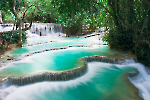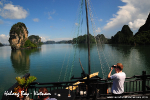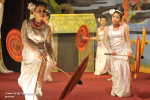Journey back to a forgotten era of grandeur and explore the captivating world of Angkor Wat and the Angkor temples. Nestled in the heart of Cambodia, these magnificent structures stand as testaments to the power and artistry of the Khmer Empire. Angkor Wat, the crown jewel of this sprawling complex, is a UNESCO World Heritage Site and a marvel of Khmer architecture. Beyond its iconic central towers, the Angkor temples offer a treasure trove of hidden gems, each with its own unique story to tell. From the enigmatic faces of Bayon Temple to the jungle-reclaimed beauty of Ta Prohm, Angkor Wat and the surrounding temples transport you to a bygone age, where Hindu gods were worshipped and intricate bas-reliefs adorned the walls. This article delves into the fascinating history of Angkor Wat and the Angkor temples, exploring their architectural styles, religious significance, and the enduring legacy they hold for Cambodia and the world.
Angkor Wat Travel Guides
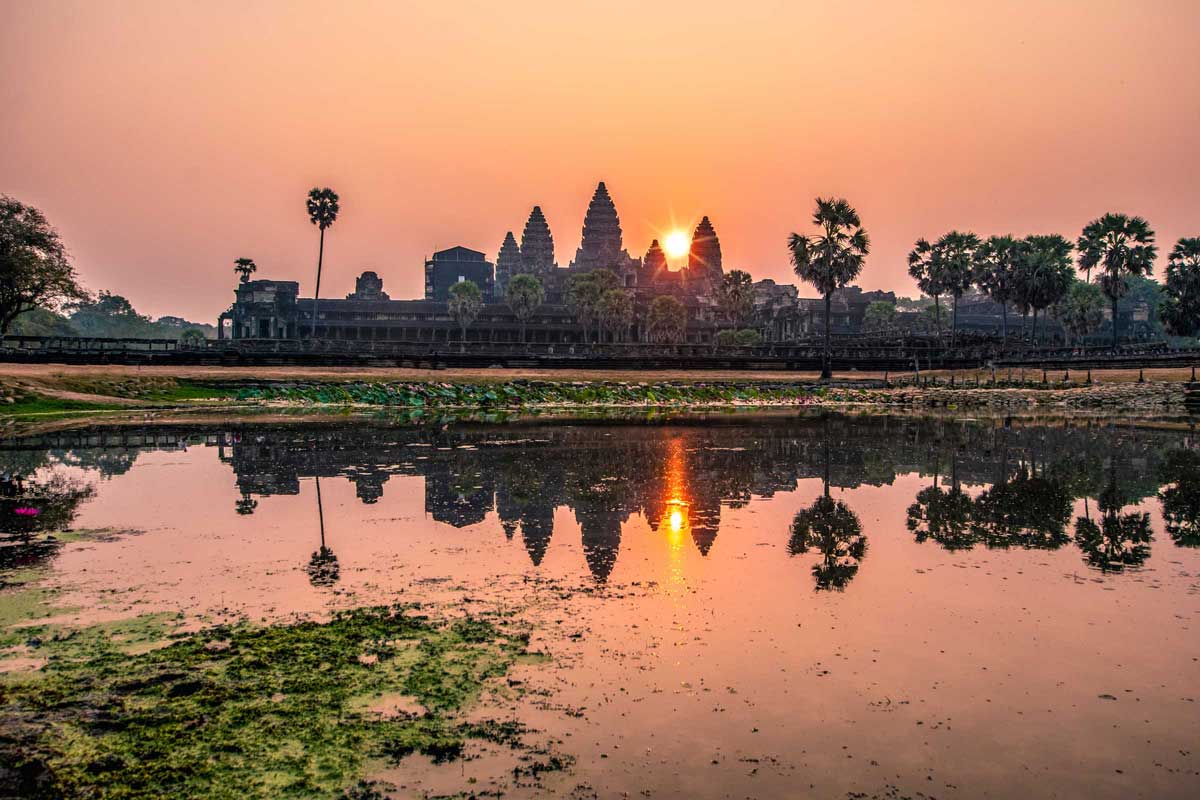
Angkor Wat, a symbol of Cambodia, stands as a testament to the grandeur of the Khmer Empire. Constructed in the early 12th century by King Suryavarman II, it was initially dedicated to the Hindu god Vishnu. The temple's design reflects the Hindu cosmology, with its five towers representing Mount Meru, the mythical center of the universe. As the Khmer Empire evolved, so did Angkor Wat. By the end of the 12th century, it transitioned into a Buddhist temple, incorporating various Buddhist iconographies while retaining its original Hindu elements. This blend of religious influences is evident in the intricate carvings and bas-reliefs that adorn the temple walls, depicting scenes from both Hindu and Buddhist mythology. Despite periods of neglect and the encroaching jungle, Angkor Wat remained a significant spiritual center and has been continuously used, which has helped preserve its remarkable architecture and art.
When planning your visit to Cambodia, Angkor Wat is undoubtedly a must-see destination. This iconic temple complex frequently appears on lists of 'top 100 places to see before you die,' and for good reason. Angkor Wat is the most famous of over 50 temples within the Angkor Archaeological Park in Siem Reap Province, covering a vast area of over 400 square kilometers of lush, humid jungle.
Built in the 12th century by King Suryavarman II, Angkor Wat was originally dedicated to the Hindu god Vishnu. Over time, it incorporated various Buddhist elements, resulting in a fascinating blend of religious art and architecture. Its five distinctive towers symbolize Mount Meru, a sacred mountain in Hindu and Buddhist cosmology, and the central tower offers stunning views of the surrounding jungle and the sprawling temple complex below.
A visit to Angkor Wat starts with crossing a large moat that surrounds the temple, followed by a walk up the main causeway leading to the entrance. The grand scale of the temple is immediately apparent, with its impressive walls stretching 1300 by 1500 meters. The central temple buildings are adorned with intricate bas-reliefs depicting scenes from Hindu mythology, which are a must-see as you explore the site.
To explore the Angkor Archaeological Park, you'll need to purchase an Angkor Pass, which grants you access to all the temples in the park. Tickets are available for 1-day ($37), 3-day ($62), and 7-day ($72) visits. The 3-day ticket can be used on any three days within a seven-day period, offering flexibility for your itinerary. Be sure to bring your passport or ID when purchasing your ticket, as a photo will be taken for the pass.
When visiting Angkor Wat and other temples, dress respectfully by covering your shoulders and knees. This not only shows respect for the sacred sites but also helps protect you from the sun. Comfortable footwear is essential, as you'll be walking on uneven surfaces throughout the day.
Beyond Angkor Wat, the park is home to numerous other remarkable temples worth exploring. Each offers its own unique history and architectural features, providing endless opportunities for discovery. To fully appreciate the grandeur and historical significance of Angkor Wat and its surroundings, consider hiring a knowledgeable guide or joining a guided tour.
Whether you're captivated by the ancient architecture, intrigued by the rich history, or simply in awe of the breathtaking views, Angkor Wat is an experience that will stay with you long after your visit. Make sure to allocate enough time to explore and absorb the majesty of this incredible site.
Essential Information for Angkor Wat Visitors:
- Angkor Wat Ticket Prices (Angkor Pass):
- 1-day ticket: $37
- 3-day ticket: $62
- 7-day ticket: $72
- Dress Code: Cover shoulders and knees; wear sturdy footwear
- Best Times to Visit: Early morning for sunrise, late afternoon for fewer crowds and better lighting for photos.
- Map Coordinates: 13.412480, 103.867522
- Duration of Visit: 2-4 hours for Angkor Wat, longer if exploring additional temples in the park
Prepare to be amazed by Angkor Wat, a true wonder of the ancient world, and an essential part of any trip to Cambodia.
Architectural Wonders of Angkor Temples
Exploring the architecture of Angkor Wat and the surrounding temples is like stepping into a masterpiece of ancient ingenuity and artistry. Angkor Wat, the prime example of classical Khmer architecture, showcases the unique style known as the Angkor Wat style. This style features ogival, redented towers shaped like lotus buds, half-galleries to broaden passageways, axial galleries connecting enclosures, and cruciform terraces along the main axis of the temple.
The temple is adorned with intricate bas-reliefs that depict a wealth of narrative scenes and decorative elements such as devatas (or apsaras), and extensive garlands. These carvings narrate stories from Hindu mythology, with the most famous being the "Churning of the Ocean of Milk," vividly portrayed in the eastern gallery. The bas-reliefs are a testament to the skilled craftsmanship of the Khmer artisans, with their dynamic figures and elaborate detailing bringing ancient myths to life.
Angkor Wat's design has been praised for its harmonious proportions and balanced elements. Architecturally, it represents a synthesis of Hindu and Buddhist cosmology, with its five towers symbolizing Mount Meru, the sacred mountain considered the center of the universe in both religions. The layout of the temple complex, with its concentric galleries and courtyards, reflects this cosmological significance.
Key architectural features include broad passageways, enclosures connected by axial galleries, and the impressive central sanctuary. The temple's orientation is unusual, as it faces west—typically associated with death in Hindu and Buddhist traditions—leading to speculation that it may have been intended as a funerary temple.
One cannot overlook the stunning decorations within the temple complex. From the dancing figures on the western wall to the lotus rosettes on the ceilings and the small posts supporting windows on the eastern face, every detail is meticulously crafted. The galleries, with their wide entrances known as "elephant gates," are designed to accommodate the grandeur of the temple's original processions.
The outer gallery's walls are adorned with large-scale bas-reliefs portraying scenes from the Mahabharata and Ramayana, illustrating the epic tales of Hindu mythology. The southern gallery, featuring the commissioning ruler Suryavarman II, showcases the heavens and hells of Hindu belief, offering a comprehensive view of the Khmer Empire's spiritual world.
Angkor Wat is more than just a temple; it is a monumental legacy of the Khmer Empire's architectural prowess and artistic vision, standing as a testament to the civilization's sophisticated engineering and deep cultural roots. Exploring these architectural wonders is an immersive journey through the spiritual and historical essence of ancient Cambodia.
Temples of Angkor
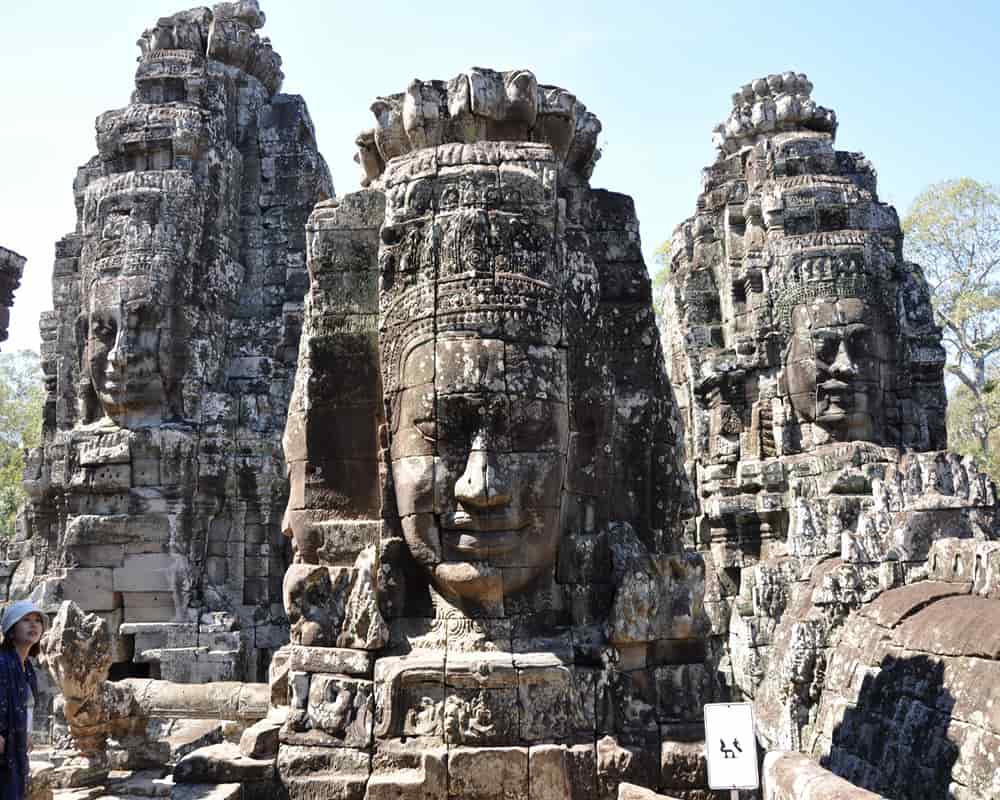
While Angkor Wat is undoubtedly the crown jewel of the Angkor Archaeological Park, the site is home to numerous other incredible temples, each offering its own unique charm and historical significance. Here is a guide to the other must-visit temples in the Angkor complex and their highlights:
- Angkor Thom
- Bayon Temple: Known for its enigmatic smiling faces carved into the stone towers, Bayon is the centerpiece of Angkor Thom. The temple's 54 towers feature 216 faces believed to represent King Jayavarman VII or the bodhisattva Avalokiteshvara.
- Baphuon: This massive temple mountain has undergone extensive restoration. It features a long causeway and an impressive three-tiered structure.
- Terrace of the Elephants: A long platform used for public ceremonies, adorned with detailed carvings of elephants and garuda.
- Terrace of the Leper King: Famous for its intricate carvings, this terrace's name comes from a statue thought to represent a leper king, though its true meaning remains a mystery.
- Ta Prohm
- The Jungle Temple: Known for the giant trees and roots that intertwine with the temple ruins, Ta Prohm offers a unique, almost otherworldly experience. It is famous for its appearance in the movie "Lara Croft: Tomb Raider."
- Banteay Srei
- The Citadel of Women: This smaller temple is renowned for its exquisite and well-preserved carvings in pink sandstone. The detailed sculptures and intricate bas-reliefs make it a standout site.
- Preah Khan
- The Sacred Sword Temple: Built by Jayavarman VII in honor of his father, this large, maze-like temple features numerous corridors and is surrounded by a moat. Its carvings and serene atmosphere make it a must-visit.
- Neak Pean
- The Temple of the Coiled Serpent: Unique in design, Neak Pean is a small island temple situated in the middle of a large, square pool. It is believed to represent the mythological lake Anavatapta, known for its healing properties.
- Ta Som
- The Little-Known Gem: Similar to Ta Prohm but smaller, Ta Som is less crowded and offers beautiful photo opportunities, particularly of the iconic tree growing over the eastern gate.
- East Mebon
- The Island Temple: Once surrounded by water, this temple features impressive elephant statues and well-preserved carvings.
- Pre Rup
- The Temple of the Turning Body: Known for its warm hues at sunset, this temple mountain provides stunning panoramic views of the surrounding countryside.
- Bakong
- The First Temple Mountain: As the central temple of the Roluos Group, Bakong is an early example of the temple mountain design and features a central sanctuary and several smaller towers.
- Lolei
- The Twin Temples: Part of the Roluos Group, Lolei is known for its brick towers and detailed carvings, dedicated to the Hindu god Shiva.
- Phnom Bakheng
- The Hilltop Temple: Offering one of the best views of Angkor Wat and the surrounding area, Phnom Bakheng is particularly popular at sunset.
Each temple in the Angkor Archaeological Park offers a unique glimpse into the grandeur of the Khmer Empire. From the serene beauty of Ta Prohm to the intricate carvings of Banteay Srei, exploring these temples provides a deeper understanding of Cambodia’s rich cultural and architectural heritage. Whether you are drawn to the mysterious faces of Bayon or the tranquil pools of Neak Pean, there is always something new to discover beyond Angkor Wat.
Planning Your Angkor Visit
Planning a visit to Angkor Wat and the surrounding temples is an adventure filled with historical wonders and stunning architecture. Here are some expert tips to help you make the most of your trip to the Angkor Archaeological Park.
1. Best Time to Visit Angkor
- Cool Season (November to February): This is the best time to visit Angkor temples, with cooler temperatures and less humidity.
- Avoid Peak Hours: Visit popular temples like Angkor Wat and Bayon early in the morning or late in the afternoon to avoid the crowds and capture the best photos.
2. Getting There
- Siem Reap: The gateway to Angkor, Siem Reap is accessible by plane, bus, or boat. The city offers a range of accommodations from budget hostels to luxury hotels.
- Transportation: Hire a tuk-tuk, bicycle, or car with a driver. Tuk-tuks are affordable and offer a fun way to explore the park.
3. Ticket Information
- Angkor Pass: You need an Angkor Pass to visit the temples. Passes are available for 1-day ($37), 3-day ($62), and 7-day ($72) visits. Purchase your ticket at the official ticket office, and don’t forget to bring your passport for photo ID.
- Flexibility: The 3-day pass can be used on any three days within a week, offering flexibility for your itinerary.
4. What to Wear
- Respectful Clothing: Cover your shoulders and knees as a sign of respect. This also protects you from the sun.
- Comfortable Footwear: Wear sturdy shoes, as you will be walking on uneven surfaces.
5. Must-Visit Temples
- Angkor Wat: Start your journey here. The sunrise over Angkor Wat is a breathtaking sight.
- Bayon: Located in Angkor Thom, Bayon’s smiling stone faces are iconic.
- Ta Prohm: Known for its giant trees and roots, this temple offers a unique, jungle-like atmosphere.
- Banteay Srei: Admire the intricate carvings in pink sandstone, a bit further from the main sites but worth the trip.
6. Guided Tours
- Hiring a Guide: Consider hiring a knowledgeable guide to enrich your experience with historical insights and fascinating stories.
- Audio Guides: Alternatively, rent an audio guide for a self-paced tour with detailed explanations.
- Package Tours: Packages that include a visit to Angkor will help you have the best and most secure experience. You don’t need to worry about buying tickets, hiring guides, or the weather. With tour packages, you can flexibly enjoy your visit to Angkor without the hassle of planning every detail.
7. Health and Safety
- Stay Hydrated: Carry plenty of water, especially during the hot season.
- Sun Protection: Use sunscreen, wear a hat, and bring sunglasses.
- First Aid: Pack a small first aid kit with essentials like band-aids and antiseptic.
8. Photography Tips
- Best Lighting: Early morning and late afternoon provide the best natural light for photos.
- Respect the Rules: Drones are not allowed without special permission, and some areas may restrict flash photography.
9. Local Culture
- Respect Sacred Sites: Keep noise levels down, do not touch the carvings, and always follow local customs.
- Engage Locals: Learn a few basic phrases in Khmer, the local language, to enhance your interactions.
10. Beyond the main temples
- Explore Lesser-Known Temples: Visit temples like Preah Khan, Neak Pean, and East Mebon for a quieter experience.
- Roluos Group: These early Angkorian temples offer a different perspective on the architectural evolution of the Khmer Empire.
11. Samples Angkor Itineraries
Exploring the Angkor temples is a fascinating journey through history and architecture. Here are a few suggested itineraries (by Tuan Phan, our Cambodia Travel specialist) to make the most of your visit:
One Day Angkor Itinerary
- Morning: Angkor Wat: Start your day early to catch the sunrise at Angkor Wat. Explore the main temple and marvel at its intricate carvings and grand architecture.
- Midday: Angkor Thom: Head to Angkor Thom, the ancient capital of the Khmer empire. Visit the Bayon Temple with its iconic stone faces and explore the Terrace of the Elephants and the Terrace of the Leper King.
- Afternoon: Ta Prohm: Visit Ta Prohm, famously known as the "Tomb Raider" temple for its appearance in the movie. Witness the incredible sight of the temple engulfed by massive tree roots.
- Evening: Phnom Bakheng: End your day by climbing Phnom Bakheng to enjoy the sunset overlooking the Angkor Archaeological Park.
Summer season: Would start by visiting from 5.00AM for early Sunrise, also to avoid having a heatwave from 10.30 AM to 3.00 PM
2-Day Angkor Itinerary:
Day 1:
- Start your day early to catch the sunrise at Angkor Wat. Explore the main temple and marvel at its intricate carvings and grand architecture.
- Afternoon: Visit Banteay Srei, a smaller but exquisitely carved temple known for its intricate pink sandstone carvings.
- Additionally, you will get to see the unique Cambodia textiles, come and alive with a visit to Golden Silk Farm, where you can experience the Khmer Weaving and contribute to its preservation.
- Evening: Explore Pre Rup temple for sunset views.
Day 2:
- Morning: Discover more remote temples such as Preah Khan and Neak Pean.
- Midday: Have lunch near Srah Srang, the Royal Bath, and take some time to relax.
- Afternoon: Explore other lesser-known temples like Ta Som and East Mebon.
- Evening: Opt for a sunset boat ride on the moat of Angkor Thom for a unique perspective.
3-Day Angkor Itinerary
Day 1:
- Start your day early to catch the sunrise at Angkor Wat. Explore the main temple and marvel at its intricate carvings and grand architecture.
- Explore the Roluos Group, which includes Preah Ko, Bakong, and Lolei temples.
Day 2:
- Discover more temples within Angkor Archaeological Park, including Banteay Kdei, Preah Khan, and Ta Prohm.
- Enjoy the Angkor Beer at your leisure at the pub-street.
Day 3:
- Visit more distant temples like Banteay Srei and Beng Mealea, known for its atmospheric jungle setting and largely unrestored condition.
- Spend the afternoon exploring local villages or indulge in a relaxing spa treatment. Or spend time to visit Golden Silk Farm where you can easily learn about Cambodia Weaving.
These itineraries can be adjusted based on your interests and the time you have available. Remember to wear comfortable clothing, stay hydrated, and respect the temple rules and cultural norms during your visit.
By planning your visit with these tips in mind, you’ll ensure a more enjoyable, respectful, and enriching experience at one of the world’s most awe-inspiring historical sites. From the grandeur of Angkor Wat to the serene beauty of Ta Prohm, the Angkor Archaeological Park offers endless discoveries waiting to be explored.

